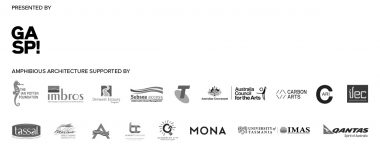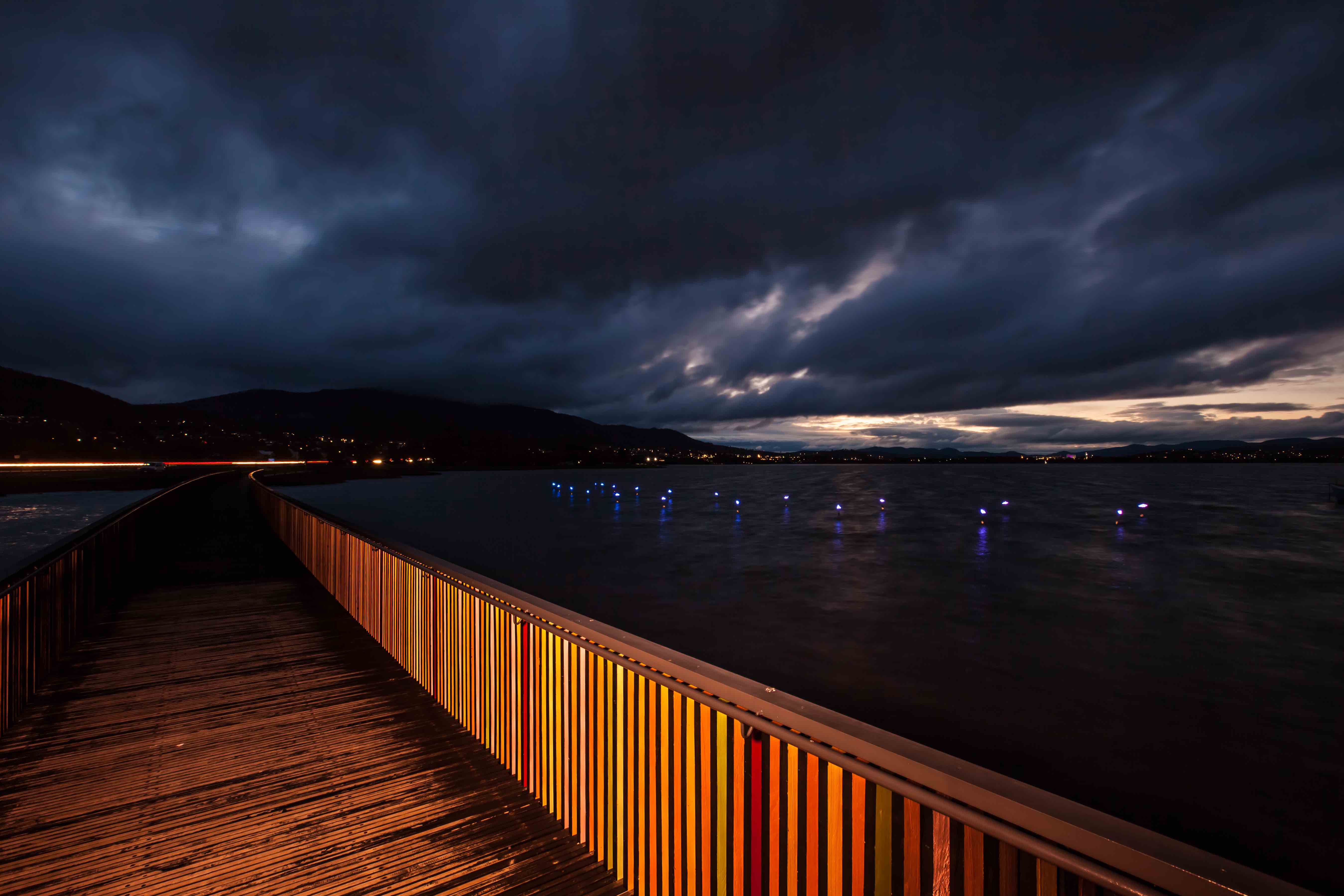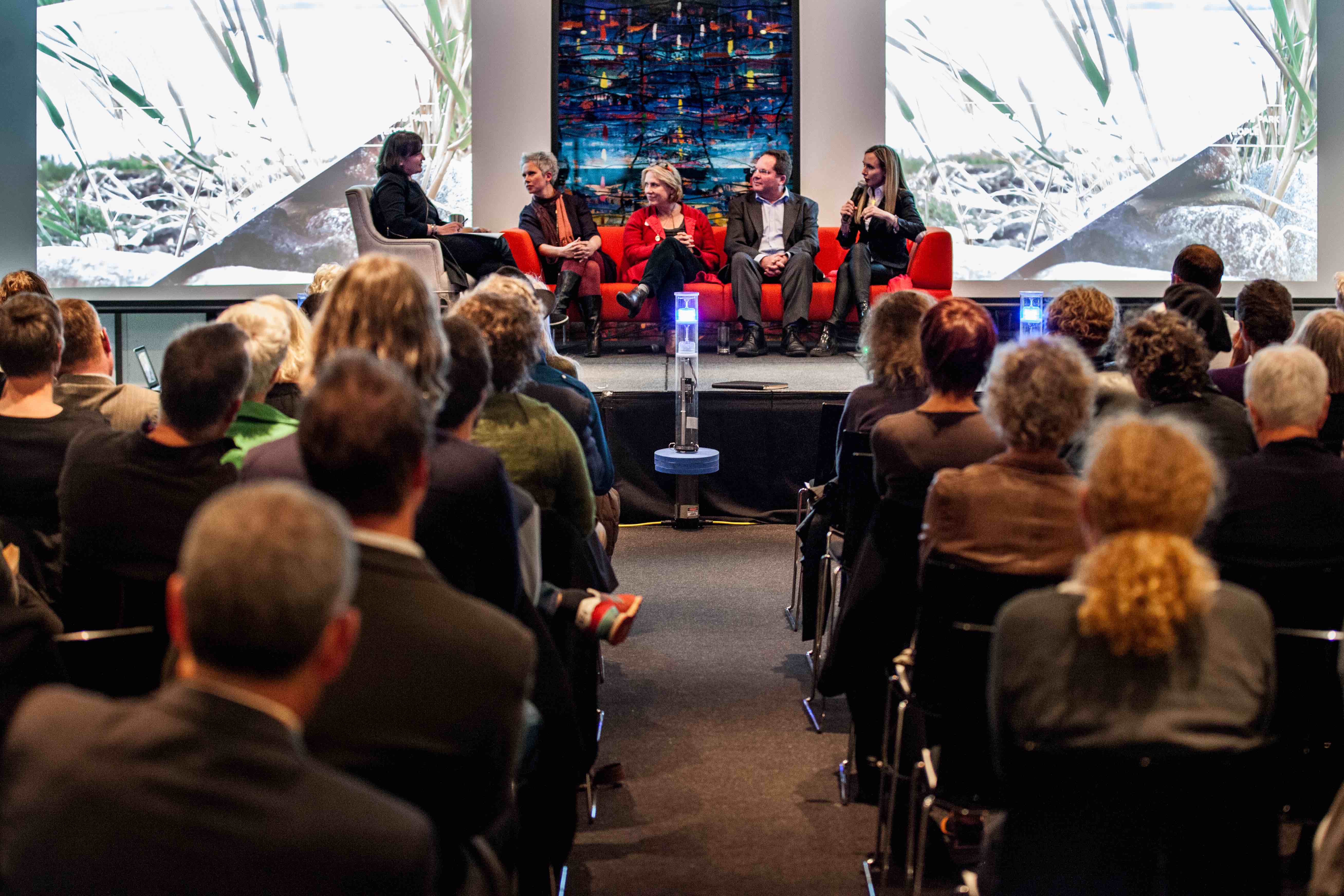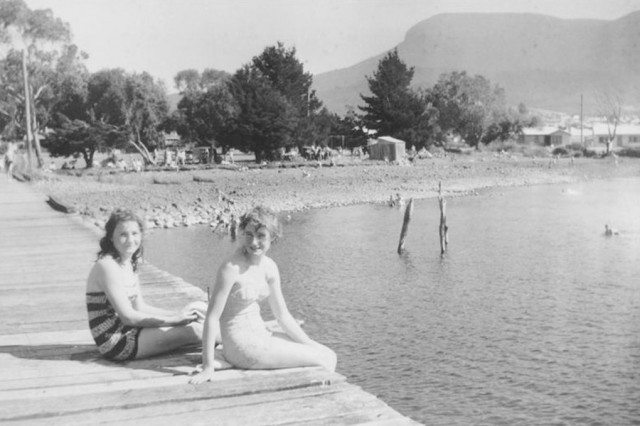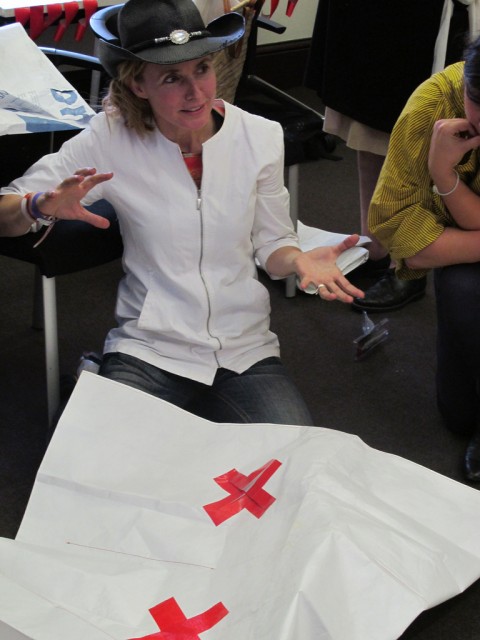Amphibious Architecture - What Does the Derwent Want?
A poetic and dynamic light array over 60 metres providing information about estuarine health through dissolved oxygen levels below the surface.
Amphibious Architecture – What Does the Derwent Want? is an interactive light array of 20 high tech polycarbonate buoys that delicately blink and bob in the bay at GASP (Glenorchy Art and Sculpture Park). This ambitious project blending art and science makes the invisible visible by revealing levels of Dissolved Oxygen (DO) in real time through coloured lights – Bright Red Low through to Bright Green High. Dissolved Oxygen is an important indicator of estuarine health.
Amphibious Architecture, first prototyped by Natalie Jeremijenko’s Environmental Art Clinic at New York University and the Living Architecture Lab at Columbia University in 2009, was developed as a semi-permanent public artwork as part of Swimmable! a three year arts program at GASP in collaboration with Carbon Arts. Swimmable! engages artists, scientists, local businesses as well as the community in projects that bring connection to the river’s changing ecology.
Visitors and community from around the world can text a special number and receive real-time analysis of the health of the river. Amphibious Architecture aims to raise the profile of important issues related to the health of the Derwent Estuary and the interdependencies in our ecosystems and make the usually invisible, visible.
This project was made possible thanks to the generous contributions of many project partners:Â Imbros Technologies for unwavering commitment and intelligence, Constance Ari, Ilec, Telstra, Sub Sea Access, IMAS, DEP, Aquenal, Marine Solutions, Burbury Consulting, Sarah Jones, Tracey Allen, Blacki, Joe Adelstein, Adrian Oliver, Eliza Burke, Nadege Philippe Janon, Jodi Newcombe.
